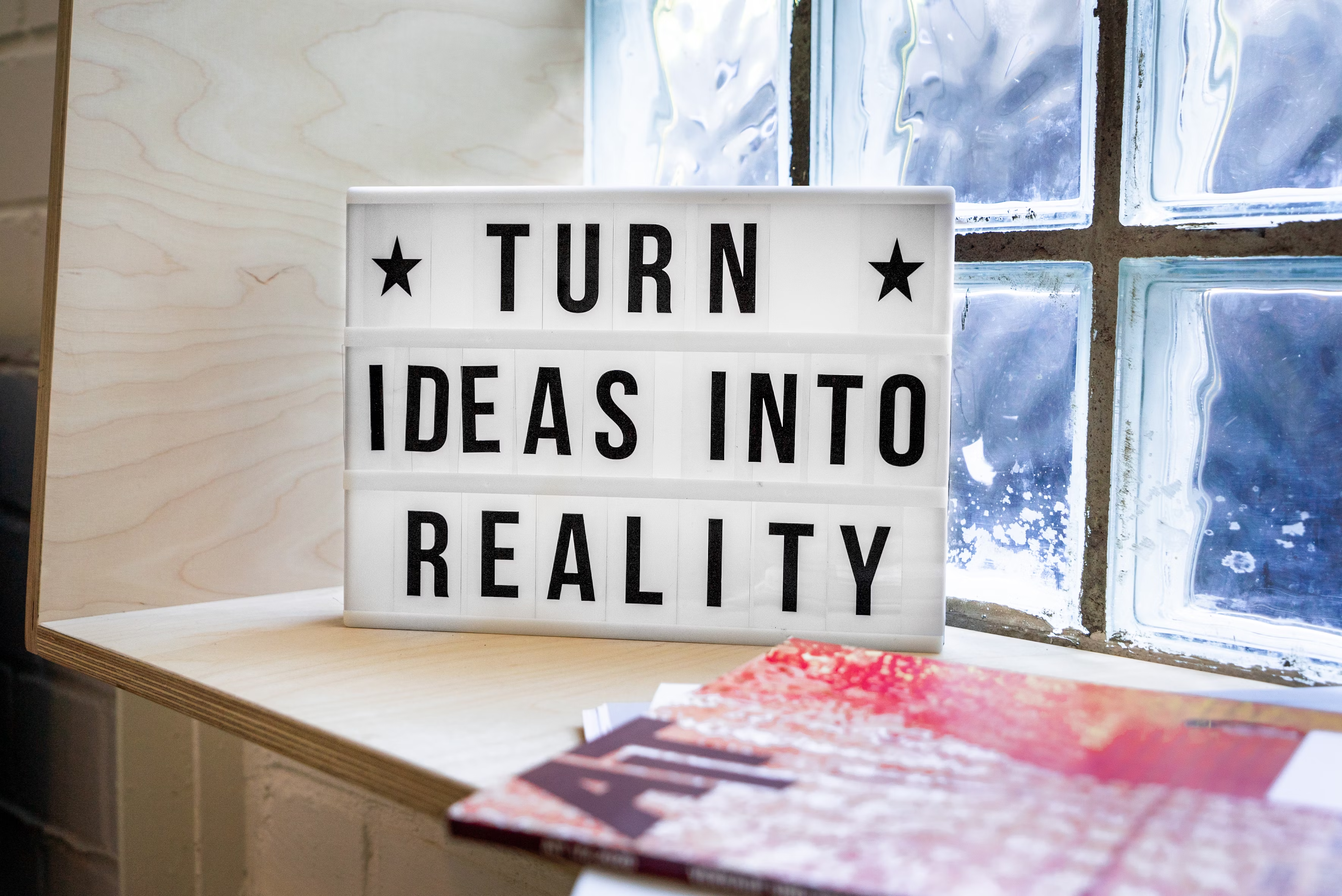Get the Most out of your Idea Validation Process: An Ultimate Guide
Idea ValidationRishabh Pandey
Validation is a process that can be quite difficult and time-consuming, but it's necessary for anyone who has to find users for their product or convince investors to fund their business.
In this article, we'll explore some ways you can validate your startup idea.
Validation means testing the feasibility of an idea by looking at its strengths and weaknesses, asking if there are any obvious problems with the plan or design, assessing how much demand there could be for such an offering in the marketplace (or whether it would compete well against existing offerings), checking on what competition might do once they find out about it and so forth.
There are many different methods of validation which include: surveying potential customers; identifying prospective partners; interviewing industry experts; analyzing competitors' products and services; and testing the viability of a business model.
To get the most out of validation, you should follow some strategic planning:
- Know who your customers are
- Know what stage of development is appropriate
- An open eye for the opportunities around you
- Keep good records on everything
- Watch for any changes in the industry around you and be consistent throughout the process.
What is Validation and why does it matter?
Validation is the process of testing the feasibility of an idea or design; it's largely a trial-and-error process. It's important because it helps to reduce waste and improve product quality. If you don't validate your idea before investing in the idea, the validation might be necessary later on - and that could cost time and money.
One of the main benefits of validation is that it will help you to get into the mindset and mentality as if you were an entrepreneur. Validation can be done by internal resources or external service providers.
The process of validating an idea takes time - often up to 6 months; so, the earlier in the design phase you can begin the validation phase, the better it is.
During the process of validating an idea, you will get tons of feedback - both positive and negative - which is why it's important to have a thick skin when validating your idea. It's also more likely that there will be conflicting opinions about what should or shouldn't be done, so it's important to understand that validating an idea is all about finding out what's right and what's wrong for a particular product/service.
Different methods of validating an idea
The first step to validation is determining whether there is a problem that needs to be solved or not.
The process includes testing the viability of a business model through a variety of methods including surveying potential customers (with surveys that are as specific as possible), bringing an idea and goals for a project to prospective investors, conducting focus group discussions with targeted customer segments with goals being to identify target markets and needs.
A business model is modified based on feedback obtained during the process until it reaches a level where it can be launched in the market.
- Surveying potential customers
- Conducting focus group discussions with targeted customer segments
- Bringing your idea and goals for a project to prospective investors
- Analyzing competitors' products and services
- Thinking about who your target audience is
- Examining the strengths and weaknesses of your business model
- Being consistent throughout the process - no matter what feedback you get, don't give up!
How to get the most out of validation?
If you want to get the most out of validation, it's important to have a realistic idea about what you're trying to validate.
You need to set up standards for success and design experiments that are going to be able to create those standards. There are also a lot of different ways that you can do validation, so experiment with different methods until you find one that works for you.
Along the way, keep good records and take note of any changes in your relavant industry; if necessary, change your process or design.
When you're validating your idea, it's important to be open-minded and understand that what works for one business might not work for another. This is why it's so important to do research before beginning the validation process in order to ensure that you have a realistic idea about the feedback that you'll get along the way.
If there is a problem that needs to be fixed, it's important not only to understand what the issue is but also to come up with some solutions.
Finally, don't give up on your idea no matter how many "no's" you get from people - if you really believe in your idea, then you have to keep working until you see results for yourself.
The validation of an idea requires a lot of time and resources. While it is important to validate your idea, you shouldn't invest all your money in the process; remember that time flies by and if you end up wasting too much time validating your idea without actually doing anything with it - then you might miss out on other opportunities.
It is important not to forget that you are the one who is ultimately making all of the decisions about what direction your business model should take, so be sure that you are keeping up with industry trends and changes in technology while at the same time keeping your end goal in mind.
You may want to determine a direction while validating your idea, but that doesn't mean you can't keep other options in mind as well just in case something comes up along the way. For example, if you're creating an app and you're getting a lot of positive feedback about it...but then Apple releases a new operating system that makes your app obsolete...then you'll want to have something else in mind just in case.
The validation process requires that you be realistic about what information can be validated - for example, when validating an idea based on the market, you might want to use surveys or interviews to determine customer preferences. If the idea is complex, however, you will not be able to gather all of the necessary information in a short period of time.
Tips for a successful validation process
- Define the parameters of the validation feedback
- Keep an open mind while doing research and understand that your idea may not work for others; be prepared to change course as needed
- Realize that time is limited when validating, but don't put all your eggs in one basket: if you're investing everything into the validation process without seeing any results, then it could hurt other opportunities and turn out to be a waste
- Test efficiently instead of making broad assumptions about what's going to happen - this increases accuracy in research because you can get better data faster
- Make sure to go through every step of the design process before launching anything or putting too much into development; and don't be afraid to scrap a design or start over if you need to
- Allow feedback from other people - these are your potential customers, so you want to use their opinions as part of the validation process; it's also important not to fall into the trap of groupthink and make sure that everyone is more than just trying to validate their own ideas
- Understand that validation isn't necessarily about receiving positive feedback; it's more about using valid information to move forward in a way that will work for your business model
- Don't be afraid of failure, but make sure you're ready and willing to take the necessary steps to avoid wasting resources when launching a business model
- Understand that it's okay to pivot as long as you're still keeping your end goal in mind; trust yourself when making decisions about how to move forward and allow yourself to make mistakes - but learn from them so you can avoid similar mistakes moving forward
- Always keep an open mind while validating - be prepared to change course if necessary, but also keep an eye on other opportunities
- Avoid groupthink as much as possible; this can lead to faulty conclusions and a flawed business model that doesn't work for your specific situation or demographic
Example of Successful Idea Validation: Instagram
In order to validate the idea for Instagram, founders Kevin Systrom and Mike Krieger set out to answer the question: "What's the simplest thing we can build that solves the problem?" They began by making a simple list of features they thought would be important for the app before settling on four basic functions then created a prototype of their possible idea.
They got feedback from their friends and colleagues who used the app. It turned out that people liked using it but found the design too complex. After simplifying the idea to only its most basic elements (a camera, photo filters, sharing capabilities, etc.), Systrom & Krieger were able to launch their product.
You can find more interesting idea validation stories that turned out to be billion-dollar businesses here.
There are many strategies for idea validation, and it’s important to be mindful of the time constraints when doing research. Our team at BufferMint is available to help you find success with your own idea validation process. You can reach out to us by booking a discovery call.
Get our articles delivered
From us to your inbox weekly.
Suggested Articles
Here are a few more articles you might like.





